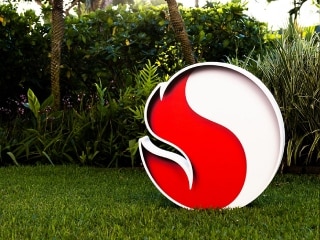- Home
- Science
- Science News
- New Laser Propulsion System Could Get Humans to Mars in 3 Days: Study
New Laser Propulsion System Could Get Humans to Mars in 3 Days: Study

The idea is to use lasers to propel spacecraft with giant sails to Mars in just three days and this is no science fiction.
The new "photonic propulsion" system relies on the momentum of photons - particles of light - to move forward.
But instead of photons from the Sun's rays, the design from Nasa scientist Philip Lubin will involve a push by giant Earth-based lasers to the spacecraft, sciencealert.com reported.
According to Lubin, the technology is very much readily available and that the system could easily be scaled up.
"There are recent advances that take this from science fiction to science reality. There is no known reason why we cannot do this," Lubin was quoted as saying.
Despite not having any mass, particles of light have both energy and momentum.
"When they reflect off an object, that momentum is transferred into a little push. With a large, reflective sail, it's possible to generate enough momentum to gradually accelerate a spacecraft," the report added.
Lubin's calculations predict that photonic propulsion could get a 100-kg robotic spacecraft to Mars in just three days.
"Electromagnetic acceleration is only limited by the speed of light while chemical systems are limited to the energy of chemical processes," Lubin wrote.
Lubin and his team have received a proof-of-concept grant from Nasa to show that photonic propulsion could be used for space travel.
Nasa is currently building the Space Launch System (SLS), the world's most powerful rocket that will take humans to Mars.
SLS is one of the most experienced large rocket engines in the world, with more than a million seconds of ground test and flight operations time.
When completed, SLS will enable astronauts to begin their journey to explore destinations far into the solar system.
The SLS will carry 13 small satellites along with an uncrewed Orion spacecraft during its first flight in 2018.
US President Barak Obama has proposed $19 billion for the US space agency in the fiscal 2017 budget - a little less that $19.3 billion Nasa received for the fiscal 2016.
Catch the latest from the Consumer Electronics Show on Gadgets 360, at our CES 2026 hub.
Related Stories
- Samsung Galaxy Unpacked 2025
- ChatGPT
- Redmi Note 14 Pro+
- iPhone 16
- Apple Vision Pro
- Oneplus 12
- OnePlus Nord CE 3 Lite 5G
- iPhone 13
- Xiaomi 14 Pro
- Oppo Find N3
- Tecno Spark Go (2023)
- Realme V30
- Best Phones Under 25000
- Samsung Galaxy S24 Series
- Cryptocurrency
- iQoo 12
- Samsung Galaxy S24 Ultra
- Giottus
- Samsung Galaxy Z Flip 5
- Apple 'Scary Fast'
- Housefull 5
- GoPro Hero 12 Black Review
- Invincible Season 2
- JioGlass
- HD Ready TV
- Laptop Under 50000
- Smartwatch Under 10000
- Latest Mobile Phones
- Compare Phones
- OPPO A6 Pro 5G
- OPPO A6s
- OPPO Reno 15 Pro Max
- Honor Win RT
- Honor Win
- Xiaomi 17 Ultra Leica Edition
- Xiaomi 17 Ultra
- Huawei Nova 15
- Asus ProArt P16
- MacBook Pro 14-inch (M5, 2025)
- OPPO Pad Air 5
- Huawei MatePad 11.5 (2026)
- Xiaomi Watch 5
- Huawei Watch 10th Anniversary Edition
- Acerpure Nitro Z Series 100-inch QLED TV
- Samsung 43 Inch LED Ultra HD (4K) Smart TV (UA43UE81AFULXL)
- Asus ROG Ally
- Nintendo Switch Lite
- Haier 1.6 Ton 5 Star Inverter Split AC (HSU19G-MZAID5BN-INV)
- Haier 1.6 Ton 5 Star Inverter Split AC (HSU19G-MZAIM5BN-INV)

















